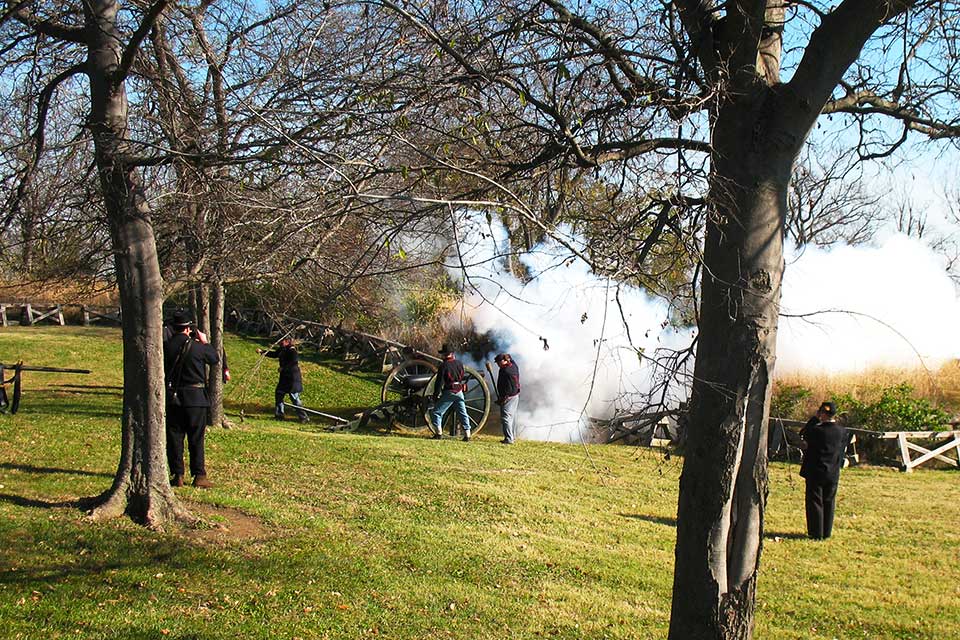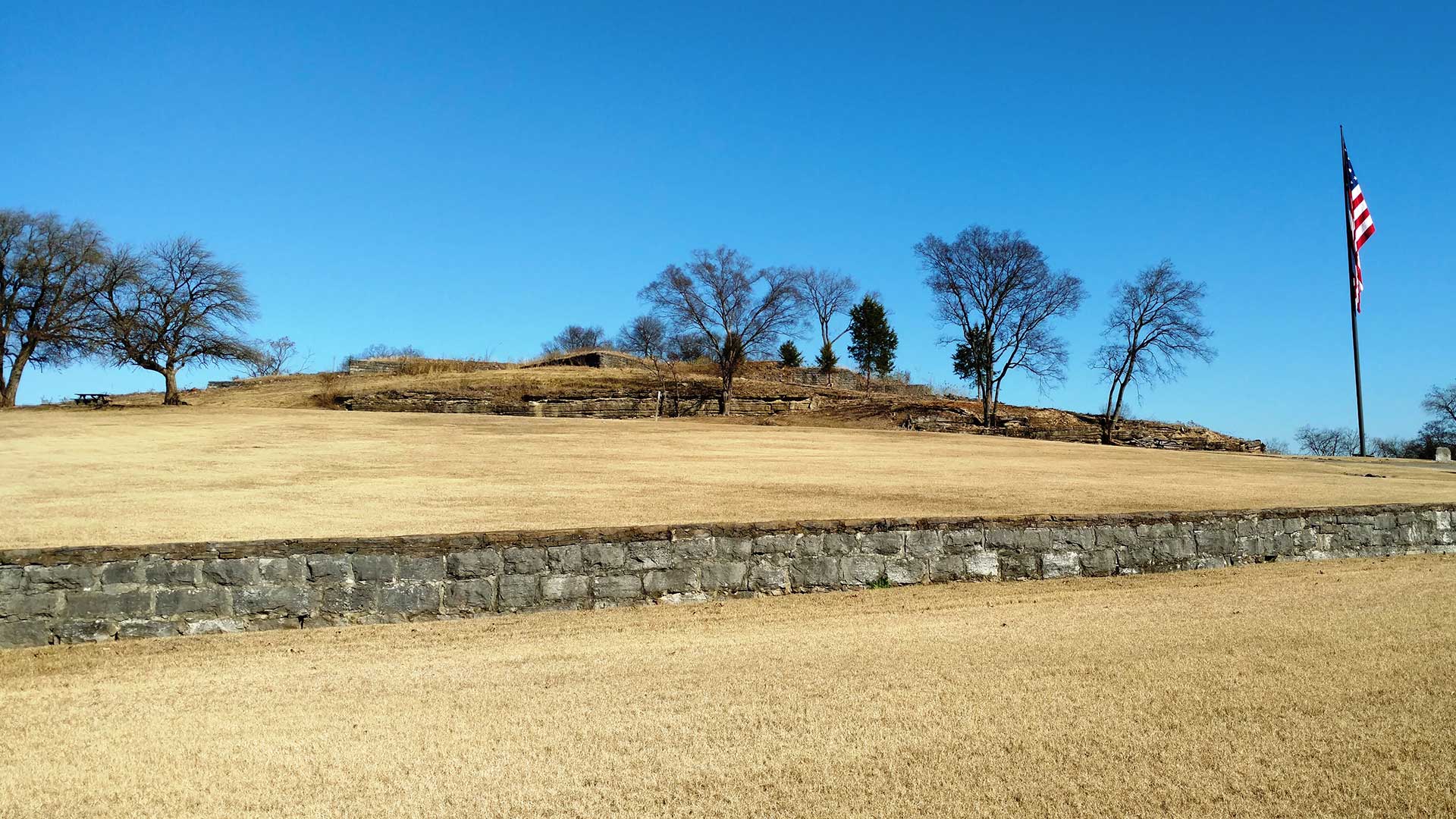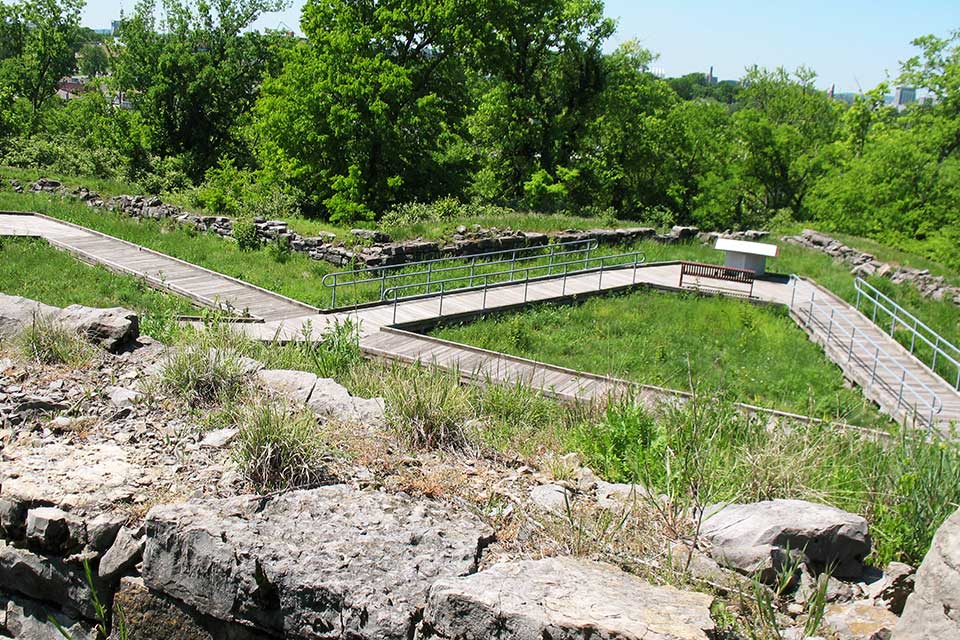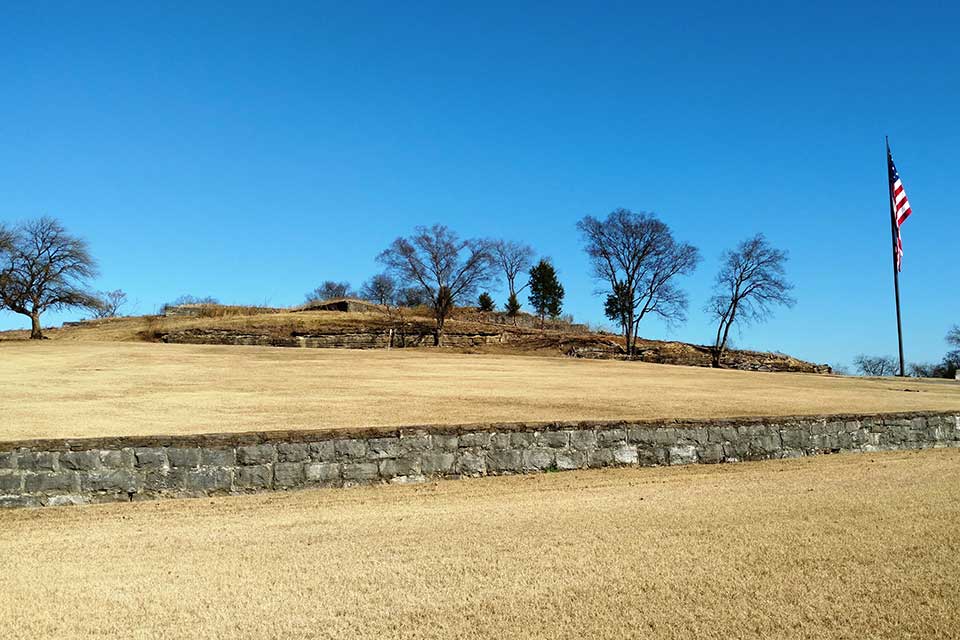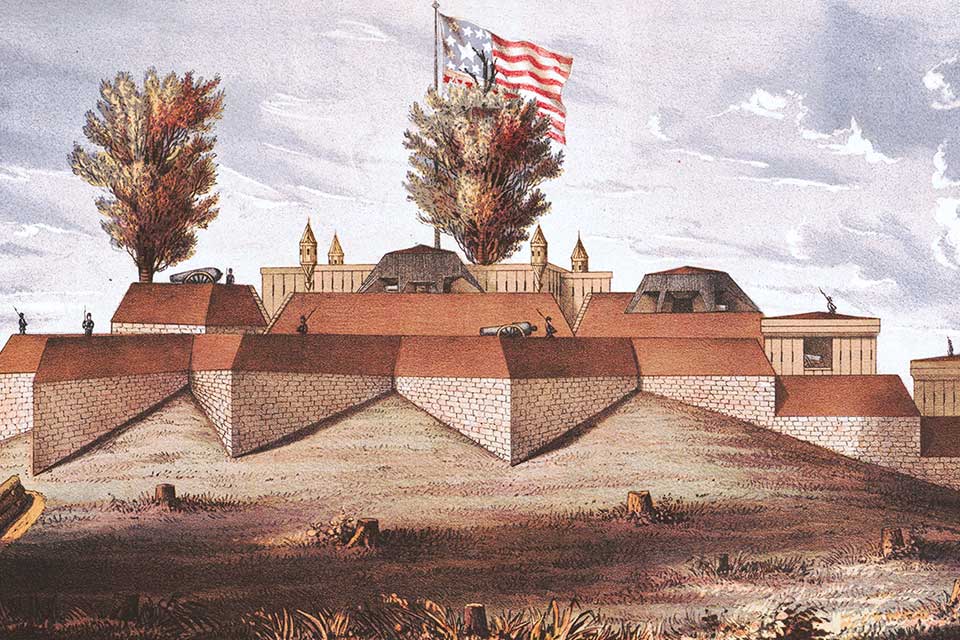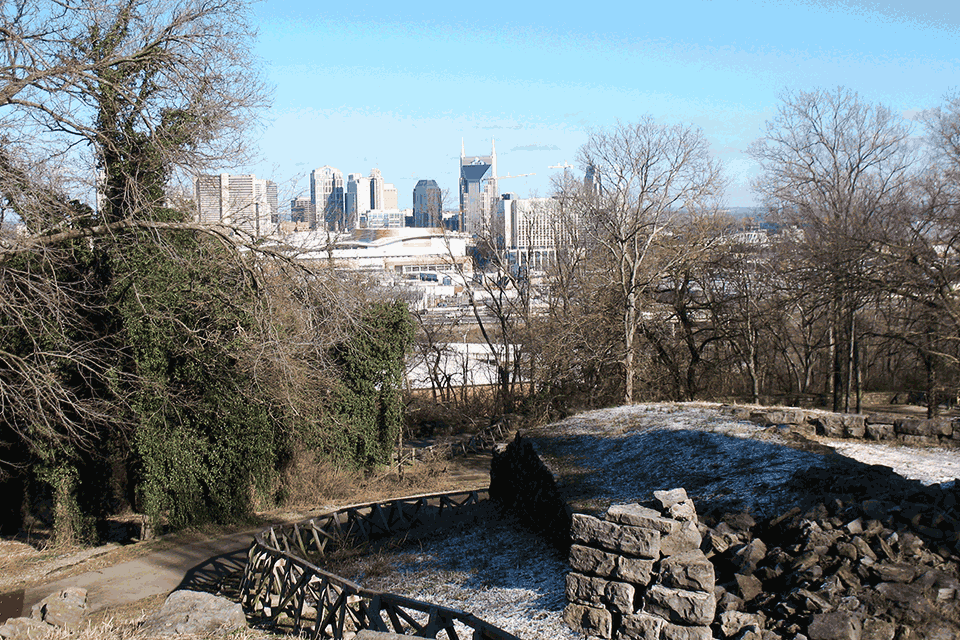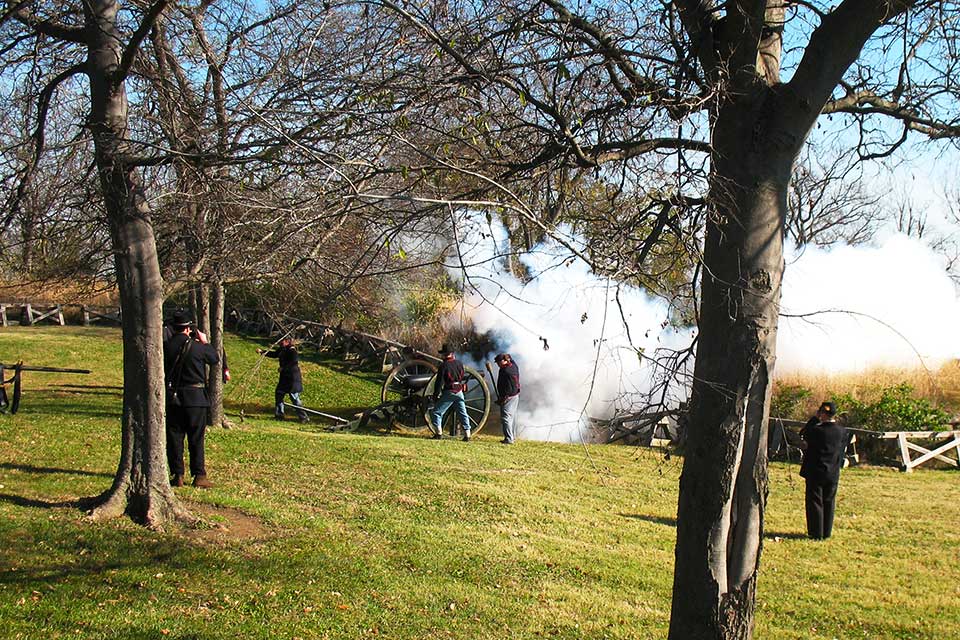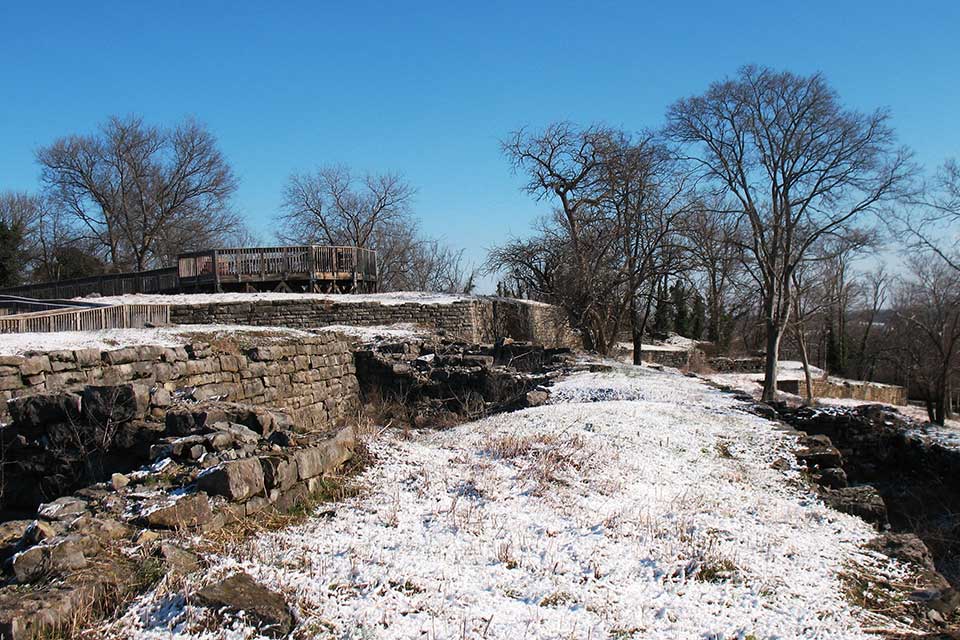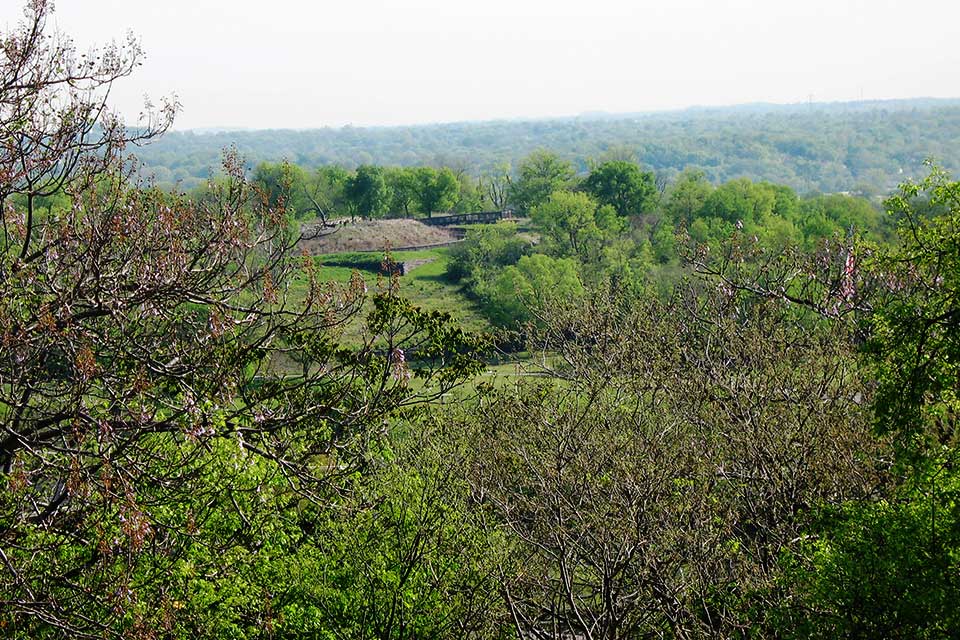Introduction
Just over one mile south of Nashville’s downtown is Fort Negley Park. The park is the site of the largest inland masonry fortification built during the Civil War, constructed by “impressed” African Americans who were either being held as slaves or had fled from enslavement to the protective lee of Union lines. This city-owned park contains important historic, cultural, and natural landscape features that connect to virtually every era of Nashville’s past. The city is proposing to build a mixed-use development on 40% of the park’s 55 acres, in an area currently occupied by an abandoned sports stadium and parking lot. Park advocates want to return the entire site to parkland, as the Nashville Park Board originally intended when the site was purchased in 1928.
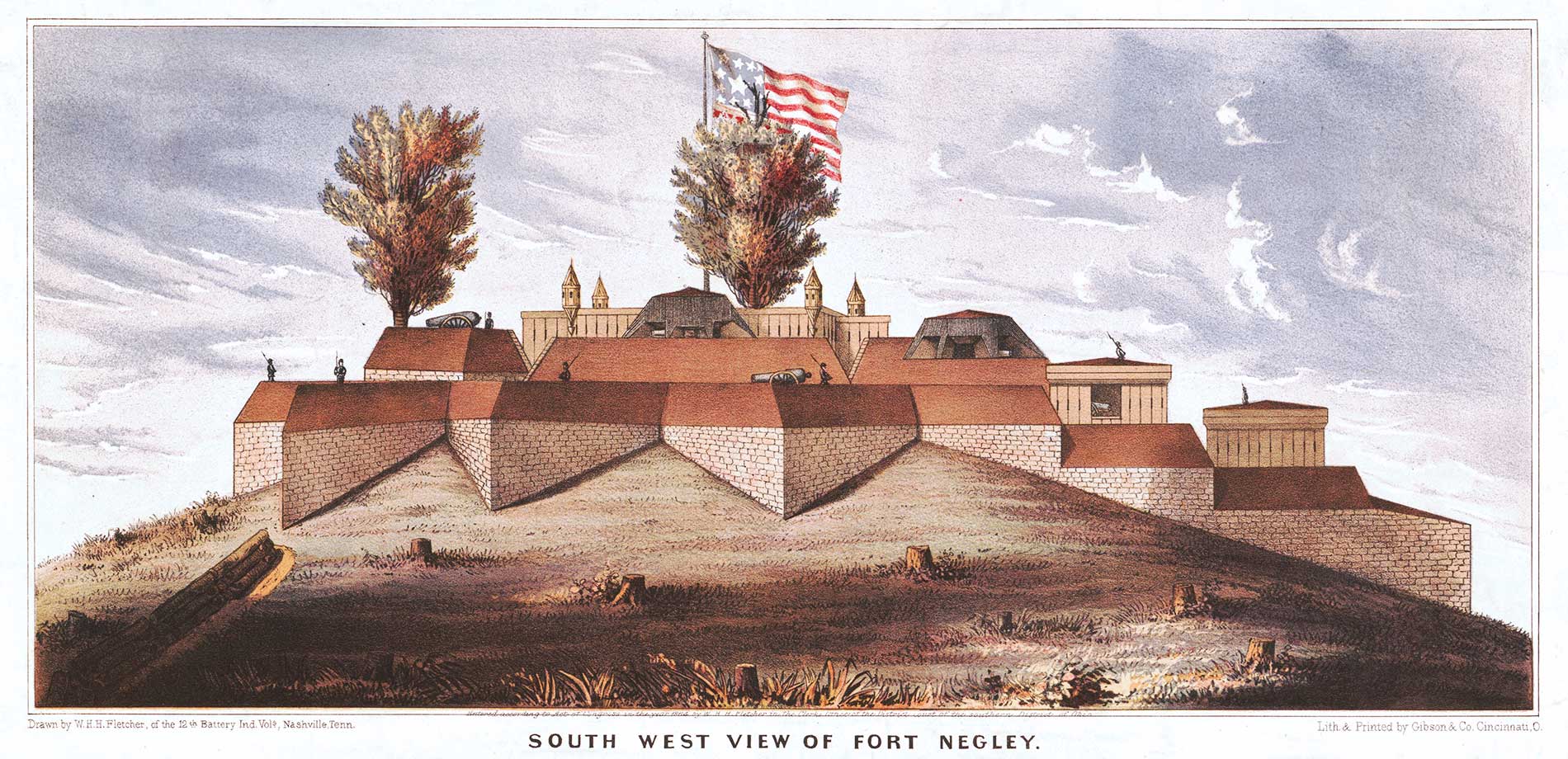 “South West View of Fort Negley,” illustration courtesy of the Library of Congress, 1864
“South West View of Fort Negley,” illustration courtesy of the Library of Congress, 1864
History
Most of the 55 acres in Fort Negley Park once belonged to Judge John Overton, one of Tennessee’s most prominent early citizens, who began acquiring the land between 1805 and 1828. Overton’s tract, which featured a rocky prominence known locally as “Saint Cloud Hill,” remained undeveloped until the Civil War, when the Union Army occupied Nashville in 1862 and seized the land to fortify the city.
Constructed of white limestone on the crest of Saint Cloud Hill, Fort Negley was the crown jewel of the Federal fortifications and entrenchments that ringed the city. Federal troop encampments sprawled towards the city on the slope north of the fort, while Negley’s large guns protected the railroad and approaches to the south. To build these defensive works, the army “impressed” African Americans who were either being held as slaves or had fled from enslavement to the protective lee of Union lines.
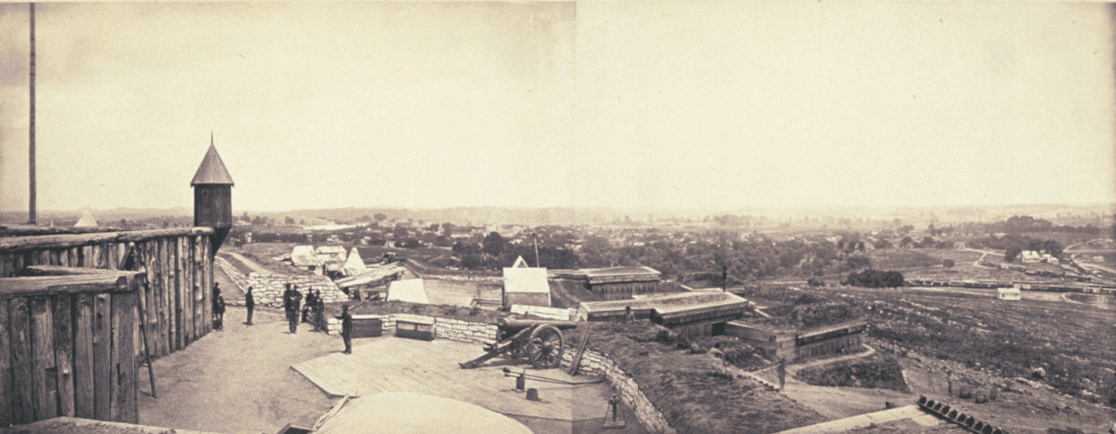 Fort Negley, Nashville, TN, photo by George Barnard, courtesy of the Library of Congress, 1864
Fort Negley, Nashville, TN, photo by George Barnard, courtesy of the Library of Congress, 1864
Thousands of these self-emancipated individuals aggregated near federal encampments in refugee, or “contraband,” camps overseen by the army. Nashville had several contraband camps, including one near Fort Negley that developed into a sizeable post-war African American residential neighborhood. Archaeological evidence of an encampment exists, as well as trace outlines of fence rows and foundations from the African American neighborhood that developed near the fort after the Civil War.
In the early twentieth century, Civil War commemorative efforts inspired three unsuccessful attempts to establish a National Battlefield Park at the site of Fort Negley in remembrance of the 1864 Battle of Nashville. In 1928 Nashville’s Parks Board purchased Judge Overton’s Saint Cloud Hill tract from his heirs with the intent of restoring the fort “as it was during the Civil War and [to] make of the land a public park.” In 1935 the Board applied for Works Progress Administration (WPA) funding to develop the land into “a decided addition to the park system of the City of Nashville besides adding an excellent historical point of interest for tourists.” Significant WPA-built stonework, a hallmark of Nashville’s New Deal cultural landscape, remains in Fort Negley Park. Workers quarried the limestone on site, mining the hillside and exposing a large stratum of 500-million-year-old fossil coral.
By 1941, relief workers had transformed nearly 50 acres passed down through Judge Overton’s family into a multi-use community asset that included the restored fort and stockade, a sports complex with four softball fields, a hardball field that was also used as a boxing ring, stone bleachers and a comfort station, open greenspace, and hundreds of feet of limestone walls.
By the beginning of World War II, the restored fort’s wooden stockade had deteriorated, and the fort was closed to the public. However, softball games continued to be held at the WPA-built diamonds. In the late 1970s, the Nashville Sounds baseball team leased the ball field section of Fort Negley Park and built Greer Stadium and parking lots on the site. The baseball team abandoned Greer Stadium in 2014.
Fort Negley, which was listed in the National Register of Historic Places in 1975, is Nashville’s only intact Civil War-era fort. Fort Negley Park was also designated a local Historic Landmark District in 2005.
Landslide Themes
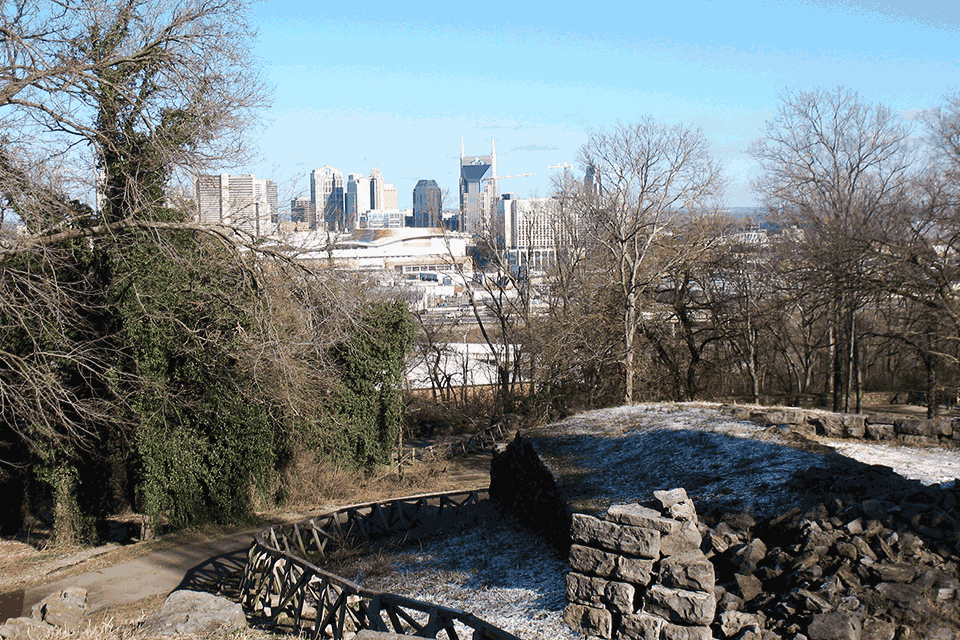
Threat
On May 26, 2017, The Mathews Company, a Nashville-based commercial real estate firm, was chosen to turn the 18.2-acre Greer Stadium property into a mixed-use development. This followed a January 2017 RFQ that called for the development of a 21-acre site (the Greer Stadium property plus three additional acres of parkland) to include residential, retail, and commercial space. The RFQ did not include a “park only” option. The city would retain ownership of the land and lease it to the developer.
The Mathews Company’s project, called the Cloud Hill Partnership, has a development team that includes music producers T Bone Burnett and Tom Middleton. According to Cloud Hill’s website, their proposal calls for: 117,000 square feet of office space; 48,350 square feet of neighborhood retail; 28,000 square feet of art and music space; a 21,200-square-foot community and culture shed; 294 units of housing (of which approximately 80 units would be designated affordable housing); and approximately eight acres of parkland. The Nashville Tennessean reports: “Cloud Hill has proposed leasing the Greer site for 99 years with [the city] retaining ownership. The developers would guarantee the city a payment of at least $1 million over 10 years and $7 million in infrastructure work for the site for needed roads, sidewalks and sewer work. [The city] and the developers would split revenue generated at the property, primarily rent collections, with Cloud Hill collecting 70 percent of the net cash flow.”
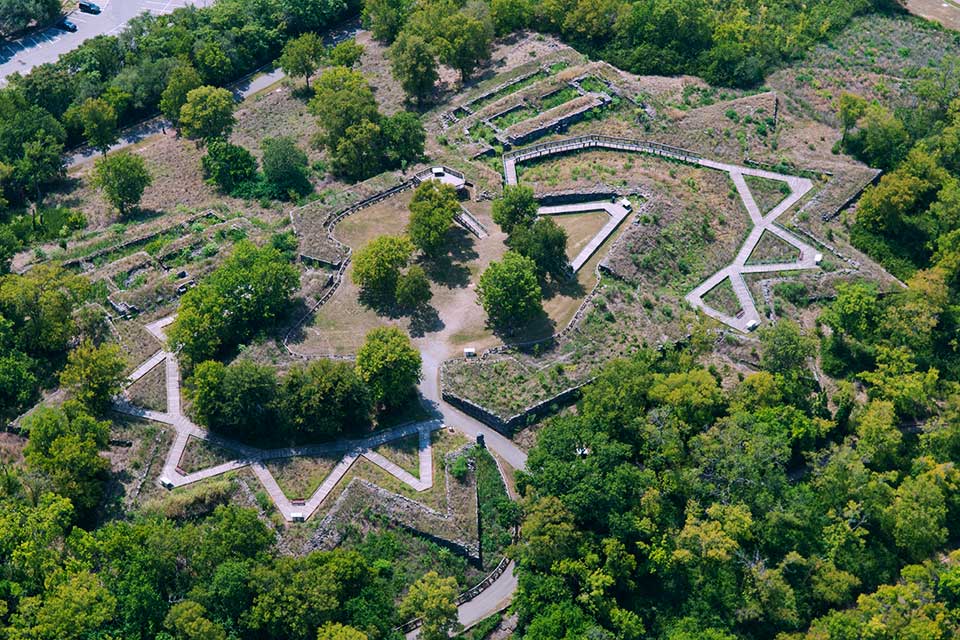 Fort Negley, Nashville, TN. Photo © Gary Layda, 2011
Fort Negley, Nashville, TN. Photo © Gary Layda, 2011
The proposal has received stiff blowback. Some Negley Park advocates, including Friends of Fort Negley and the Civil War Trust, are asking that the Greer Stadium complex be reunited with Fort Negley and returned to park use, which would be consistent with the Nashville Park Board’s original intent expressed in 1928 when the Overton property was purchased: “to make of the land a public park.”
On the city council (known as the Metropolitan Council or Metro Council), At-large Councilman John Cooper, a critic of the Cloud Hill proposal, asked Ben Page of the Nashville-based Page | Duke Landscape Architects to create a plan for a park. On July 14, 2017, the Tennessean and other media outlets published Page’s concept. While it came without a cost estimate, advocates used the plan to demonstrate what a unified Fort Negley Park could be.
Park advocates have also pointed out that Fort Negley and the park are significant for African American history and heritage, from the Civil War era, though Reconstruction, to the Civil Rights era. Dr. Learotha Williams, associate professor of African American and public history at Tennessee State University, writing in the Tennessean, called Fort Negley Park a “sacred site,” and Robert Hicks, a New York Times best-selling author and advocate for Civil War-era sites, termed the area “hallowed ground.”
Others have said the site may contain the remains of Civil War dead and hundreds of African American workers who built the fort, although, following the Civil War, the remains of soldiers were relocated to the National Cemetery in Madison. Some remains may well have been disturbed and destroyed when the stadium and its parking facilities were built in the late 1970s. The city has hired an archaeological firm that will examine the site using ground-penetrating radar. A report on their findings is expected by the end of 2017.
On October 6, 2017, Historic Nashville announced its annual list of endangered sites. Rather than their usual “Nashville Nine,” the list included one site only: Fort Negley Park. On October 9, 2017, the Friends of Fort Negley filed a petition asking the Tennessee Historical Commission to make a determination that the entirety of Fort Negley, including the Greer Stadium site, is a “historical memorial.” According to the Tennessee Historic Preservation Act of 2016, development at the site would not be permitted without a waiver from the Commission.
What You Can Do to Help
Support the work of the Friends of Fort Negley Park.
Contact the Mayor and Metro Council and urge them to reunite Fort Negley Park and the Greer Stadium site and to return the entire ensemble to parkland, as the Nashville Park Board originally intended when the site was purchased in 1928:
Megan Barry, Mayor, City of Nashville
1 Public Square, Suite 100
Nashville, TN 37201
megan.barry@nashville.gov
Metropolitan Council Office
Metro Historic Courthouse
One Public Square, Suite 204
P. O. Box 196300
Nashville, TN 37219-630
councilmembers@nashville.gov
